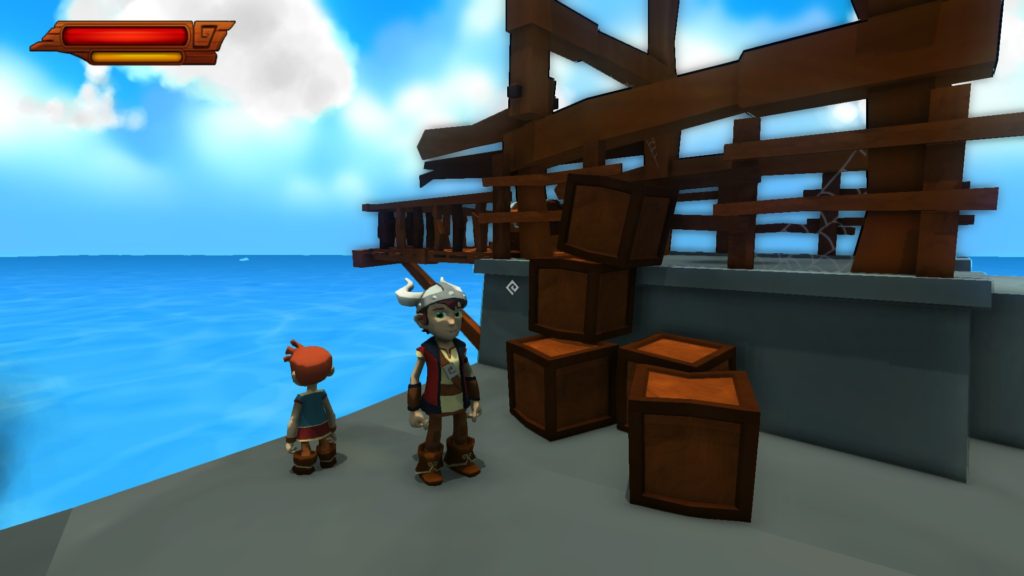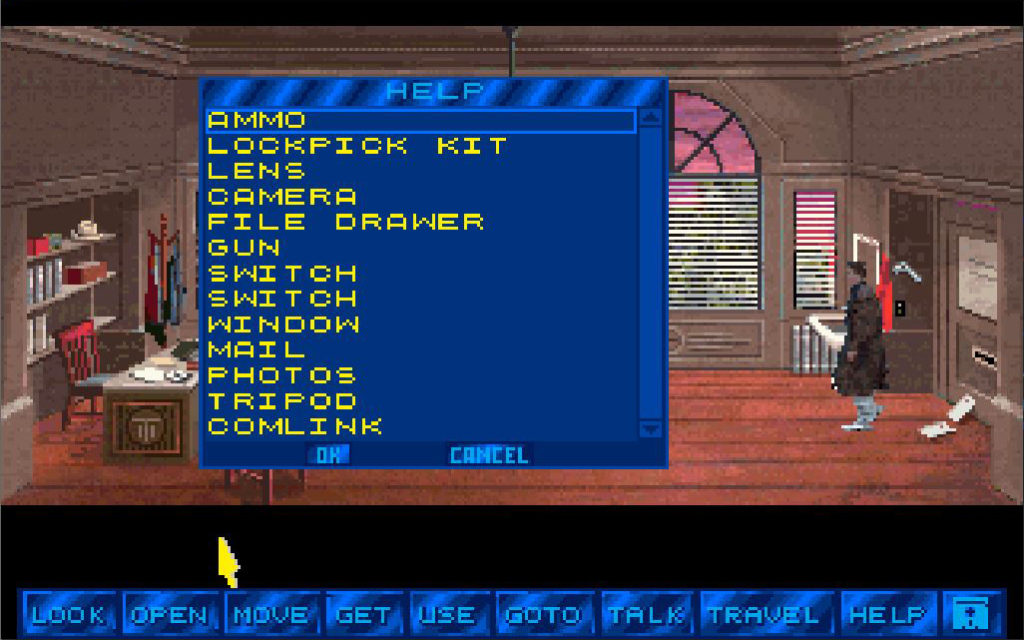Solutions
You might have felt a bit of a theme on the previous page; DPD stems from the player’s expectations not matching up with the developer’s expectations and vice-versa.
There’s no one solution for avoiding DPD in every game. The implementation and goals of each game is different and so too are a game’s potential DPD. But being aware of the problem and possible resolutions can help you smooth out your player experience and reduce DPD.
1: Make a Tutorial
A tutorial should be the first thing a player interacts with. Make it a good one. Gone are the days of Star Wars Episode 1: The Phantom Menace or Sherlock Holmes: The Awakened where the manual describes the first 10 to 20 minutes of the game to you. Nowadays, a game must stand on its own. And that means you need a tutorial.
Game Maker’s Toolkit and Extra Credits do a much better job explaining tutorials than I ever could. But I’d like to hone in on two points:
1: Assume that your player has never played a game. Even veteran players of your genre need everything laid out so they understand what to expect from a particular title.
2: Whenever possible, make rolling tutorials. Front-load as little information as possible and then bring up the next important bit when players first need it. You don’t need to explain a map until the main character leaves the house, for example. Putting the information in context like this ties it to an action, making it easier to remember.
Rolling the tutorial out as the player needs it also means that there’s less for the player to remember at once. This frees up time and space for you to get some worldbuilding and puzzling in before the next mechanic adds a new wrinkle.
2: Follow your own rules
This one should be obvious but don’t say one thing and do another. People get mad at practical jokes and jerks do those for free. Why would your paying customers think being lied to was fun?
If you do need to switch things up a bit, make sure it is clearly understood why. Maybe the character loses their cell phone or can’t use their psychic powers after getting a concussion. Make the rule changes be story (or puzzle type) related and not ‘just because’.
3: Avoid Softlocks
A softlock is when a game is still running and seems to be playable but progression is no longer possible from that save file. It could be an infinite loop, not picking up a one-time item, or just eating a sandwich.
Yes, eating a sandwich. In The Dagger of Amon Ra the player needs to trade a coupon for a sandwich to give to a hungry police officer. If the player instead eats the sandwich (and it does look pretty good), they’re stuck with no way to procure another one or find an alternative food.
Avoid this at all costs. Intentionally designed softlocks betray the fundamental player expectation that the game will tell you when you mess up. It is perfectly ok for the player to fail. But they have to know that they failed and how.
4: Be Really Careful with Your Signposting
As mentioned with the Misleading Signposting problem, your players are paying attention. You, as a developer, have to be very careful about what they pay attention to.
Incidental dialog and environmental storytelling should always play to the needs of the current problem or be obviously unrelated. If a player needs to find a hidden passage to progress; maybe avoid talking about unrelated secrets for a bit. If a door is locked, make it obvious that the main character doesn’t think they’ll find a key.
5: Dismantle FOO Strategies
Particularly in physics based puzzlers; a box is the single most overpowered item in a game. You can store things in it, it can block line-of-sight, it can be a ladder, a weight, or a hiding place. If you’re not careful, your game will change from “how can I solve this puzzle?” to “how can I use this box?”. This is a First Order Optimal (or FOO) Strategy. And it’s great and feels powerful… right until it stops working and you suddenly don’t have the other skills to progress.
The tricky solution is again, to see what your players are doing and remove that powerful option early so they can learn other mechanics. Maybe the boxes are too heavy or completely missing. Maybe the boxes are suddenly all spheres. Maybe there’s an anti-box robot that keeps knocking down and eating your tower! Whatever you need to do to make the player learn what they need, do it.
6: Incentivise backtracking
Sometimes there’s not much you can do for a player besides loudly shouting “PICK UP THE PENCIL”. But that is the opposite of subtle. Sometimes the player just needs to come back to a place to see it differently.
Consider designing your game to return to locations several times. As players get more familiar with a space and everything in it, they will more readily see the objects there as potential solutions and will notice changes more easily.
Alternatively you can give your player a couple generic global objects. Edna and Harvey: The Breakout gives the player a phone (receiver) and a comic book. Both are used only once or twice as puzzle solutions but both have interactions in almost every room with almost every character. This encourages exploring during some of the potentially frustrating bits and makes it more likely that the player will stumble upon what they actually need.
The real gist of this one is you’re trying to avoid boredom and frustration. Your game needs enough stuff and interactions that the player has things to see and do while searching for a solution.
7: Blind Playtesting
The single most important thing to do is get feedback. Particularly feedback from people who haven’t worked on the game. Playtest early and playtest at as many milestones as you can. You know how to complete your game. Other people… maybe not so much.
Watch your playtesters, see where they might be getting stuck. Are they getting stuck where you designed a tricky puzzle? Or are they stuck on something really obvious? Dig into the root of the problem.
8: Build a Hint System
If all else fails, build a hint system. Make it optional but comprehensive. It is far better that the solution be found in-game than on GameFAQs or UHS. In fact, a well designed hint system can be a sort of tutorial on its own. A checklist or set of leading questions is sometimes enough to orient a player before they look at a full hint.
Martian Memorandum does this really well. Its multilevel hint system starts with just a list of everything you can click on in a scene. Then the second layer nudges at what sort of actions a hotspot needs. Only the third and final hint layer actually gives away the full solution.
Conclusion
It is the very rare case where Developer-Player-Dissonance makes a game literally unplayable. However, moments of DPD can be the most frustrating part of a game. Losing a player could lead them to remember the game negatively or stop playing altogether. It’s important to consider the sticking points in your game and how you could smooth out the experience.
And if you’ve immersed players and become an invisible guiding hand? Well now.
That’s magic.




